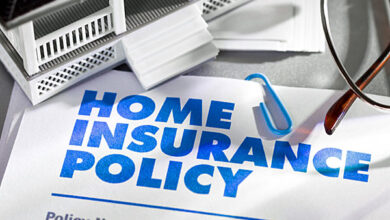Best Way To Compare Car Insurance Rates
Comparing car insurance rates can be a daunting task, as there are so many options to choose from and so many factors to consider. However, by following a few simple steps, you can easily find the best car insurance rates for your needs.
First, it is important to understand what factors affect car insurance rates. These include your driving record, the make and model of your car, your age and gender, and your credit score. In addition, the state in which you live and the coverage limits you choose can also impact your car insurance rates.
What is Car Insurance Rates
Car insurance rates vary depending on a number of factors, such as the driver’s age, driving history, the type of car being insured, and the location where the car is primarily driven. Other factors that can affect car insurance rates include the driver’s credit score, the amount of coverage required, and any discounts that may be available. In general, younger drivers, drivers with poor driving records, and drivers who live in high-crime areas will typically pay higher rates for car insurance. Additionally, luxury or high-performance cars may also be more expensive to insure.
How To Compare Car Insurance Rates
One of the best ways to compare car insurance rates is to use an online comparison tool. These tools allow you to enter your information and compare rates from multiple insurance companies at once. This can save you a lot of time and effort, as you do not have to contact each company individually.
When using an online comparison tool, it is important to make sure that you are comparing apples to apples. This means that you should compare the same coverage limits and deductibles for each company. Otherwise, the rates may not be accurate or comparable.
Another important step in comparing car insurance rates is to research the insurance companies themselves. You should look for companies with a good reputation and financial stability. This can help ensure that you are getting a good deal and that your insurance company will be able to pay out claims if you need to file one.
It’s also important to consider discounts that are available. Some insurance companies offer discounts for things like good driving records, multiple vehicles, and safety features. By taking advantage of these discounts, you can lower your car insurance rates even further.
Once you have compared rates and researched insurance companies, you should contact the companies directly to get a quote. This will give you an idea of how much your car insurance will cost with each company. Be sure to ask about any discounts or special offers that may be available.
Finally, don’t be afraid to negotiate. Once you have received a quote, you can ask the insurance company if they can offer a better rate. If you have a good driving record or other factors that make you a low-risk driver, you may be able to negotiate a lower rate.
Conversely, comparing car insurance rates can be a simple and straightforward process with the right approach. By understanding what factors affect car insurance rates, using an online comparison tool, researching insurance companies, considering discounts, and negotiating with insurance companies, you can find the best car insurance rates for your needs.
Comparing car insurance rates is an important step in finding the best policy for your needs and budget. Here are a few tips for comparing car insurance rates:
- Gather information about your car and driving history: Before you start comparing rates, make sure you have all the information about your car, including the make, model, and year, as well as your driving history, including any accidents or traffic violations. This information will be needed to get an accurate quote from insurers.
- Use online comparison tools: There are several websites that allow you to compare rates from multiple insurance providers. These tools are a quick and easy way to get an idea of the rates available and can save you time and effort.
- Contact insurance agents directly: While online comparison tools can be helpful, they may not always provide the most accurate or complete information. Contacting insurance agents directly can give you a more detailed quote and the opportunity to ask any questions you may have about the policy.
- Look for discounts: Many insurance companies offer discounts for things like good driving records, safety features, and low mileage. Make sure to ask about any discounts that may apply to you.
- Read the fine print: Once you have received a quote, make sure to read the policy details carefully to understand what is covered and what is excluded. This will help you compare policies and make an informed decision.
- Review your policy regularly: Review your policy regularly, especially if your situation changes (e.g. you move, buy a new car, etc) to ensure that you are still getting the best coverage and rates.
It’s important to keep in mind that the cheapest policy may not always be the best policy for you. It’s crucial to find a balance between affordability and adequate coverage that will protect you and your car in the event of an incident.
Car Insurance Packages
Car insurance packages typically include a combination of coverage types that are designed to protect the policyholder in the event of an accident or other covered event. The most common types of car insurance coverage include:
- Liability coverage: This type of coverage is typically required by law and covers the cost of any damage or injury that the policyholder is deemed responsible for causing to another person or their property.
- Collision coverage: This type of coverage pays for damage to the policyholder’s vehicle in the event of an accident, regardless of who is at fault.
- Comprehensive coverage: This type of coverage pays for damage to the policyholder’s vehicle caused by events such as theft, vandalism, or natural disasters.
- Personal Injury Protection (PIP) : PIP covers medical expenses and lost wages for the policyholder and passengers in the event of an accident.
- Uninsured/Underinsured Motorist Coverage: This type of coverage provides protection if an accident occurs and the other driver is uninsured or underinsured.
Some insurance companies also offer additional coverage options such as rental car coverage, roadside assistance, and new car replacement coverage.
Conclusion
In conclusion, comparing car insurance rates is an important step in finding the best policy for your needs and budget. By using online comparison tools, contacting insurance agents directly, looking for discounts, reading the fine print, and reviewing your policy regularly, you can find a policy that is both affordable and provides adequate coverage.



